What is a Tanto?
TLDR: A tanto is a traditional Japanese dagger characterized by its distinct, angular blade shape, typically used for stabbing or slashing.
As a blade aficionado, I’m always thrilled to discuss the tanto. This Japanese dagger, with its distinctive angular blade, has been a favorite of mine for years. Originally from 12th-century feudal Japan, it’s evolved into various modern forms that I find endlessly fascinating.
What I love most about the tanto is its versatility – from combat to kitchen use, it’s a true jack-of-all-trades. In my experience, its broad, durable design and strong tip make it unbeatable for piercing tasks. Whether you’re a collector or just appreciate fine craftsmanship, the tanto is a knife that deserves attention. It’s not just a blade; it’s a piece of history you can hold in your hand.
Origins and History
The tanto’s roots in 12th-century feudal Japan never fail to captivate me. It’s like holding a piece of history in your hand, you know? This blade emerged during a time of intense warfare and social upheaval, which I think really shaped its design and purpose.

Samurai warriors, those legendary figures of Japanese history, adopted the tanto as part of their arsenal. Can you imagine being a samurai and carrying one of these? I often wonder what it must have felt like to wield such a blade in battle. The tanto wasn’t just a weapon, though. It was also a symbol of status and honor, which I find incredibly cool.
Over time, the tanto has gone through quite an evolution. From its origins as a stabbing weapon to its later use in ceremonial contexts, it’s adapted to changing needs and tastes. I’ve seen some modern tantos that barely resemble their ancient counterparts, but they still carry that essence of the original design.
In my opinion, the tanto’s ability to evolve while maintaining its core characteristics is what makes it so special. It’s not stuck in the past, but it hasn’t lost touch with its roots either. I’ve got a few different tantos in my collection, ranging from traditional to modern designs, and each one tells a different part of this blade’s fascinating story. It’s this rich history and ongoing evolution that keeps me coming back to the tanto time and time again.
Characteristics of a Tanto Knife
When it comes to the tanto knife, its distinctive angular blade shape is what really sets it apart. I’ve spent hours admiring the clean, sharp lines of a well-crafted tanto. That abrupt angle near the tip? It’s not just for show – it’s a game-changer in terms of functionality.
The two cutting planes are another feature that I find fascinating. You’ve got the main edge, which runs most of the blade’s length, and then this secondary edge that forms that characteristic angle. In my experience, this design allows for some seriously versatile cutting action. Whether you’re slicing or stabbing, the tanto’s got you covered.
Now, let’s talk about that broad and durable blade design. I’ve put my tantos through some pretty tough tests, and I’m always impressed by how well they hold up. The thickness near the tip provides strength where other knife designs might fail. It’s this robustness that, in my opinion, makes the tanto such a reliable choice for heavy-duty tasks.
Here are the key characteristics that make the tanto knife so special:
- Distinctive Angular Blade Shape: The sharp, angular design near the tip is both visually striking and highly functional.
- Two Cutting Planes: The main edge and the secondary edge create a versatile cutting tool capable of handling various tasks.
- Broad and Durable Blade Design: The thickness near the tip ensures strength and durability, making it ideal for heavy-duty use.
I’ve got to say, the combination of these features is what makes the tanto a standout in any knife collection. It’s not just about looks (though I do love that angular aesthetic). The tanto’s design is a perfect blend of form and function. Whether you’re using it for everyday carry or keeping it as a prized display piece, there’s something undeniably special about a well-made tanto knife.
Traditional Uses
The tanto’s traditional uses are a fascinating aspect of its history, and they really showcase the versatility of this blade. I’ve always been intrigued by how a single tool can serve such diverse purposes.

As a weapon, the tanto was a force to be reckoned with. Its design made it perfect for close-quarters combat, which was crucial in the tight spaces of feudal Japanese castles and narrow streets. The strong, piercing tip could penetrate armor effectively, while the sharp edge was ideal for slashing. I’ve handled replicas of ancient tantos, and let me tell you, the balance and feel of these weapons is incredible. It’s easy to see why samurai trusted their lives to these blades.
But what I find even more interesting is the tanto’s role in ceremonial purposes. It wasn’t just a tool of war, but a symbol of status, honor, and sometimes, sadly, a means of ritual suicide in the practice of seppuku. The craftsmanship that went into ceremonial tantos is simply breathtaking. I’ve seen some with intricate engravings and precious metal inlays that elevate them from mere tools to works of art.
In my opinion, it’s this duality of purpose that makes the tanto so special. It’s a blade that can take a life or be a treasured family heirloom passed down through generations. The respect and reverence given to these knives in traditional Japanese culture is something I deeply appreciate. It’s not just about the blade itself, but the history and meaning it carries.
Modern Applications
The tanto’s evolution into modern applications is something that never ceases to amaze me. It’s a testament to the enduring appeal and functionality of this blade design.
Pocket knives with tanto blades have become increasingly popular, and for good reason. I carry one myself, and I’ve found it to be incredibly versatile for everyday tasks. The strong tip is great for piercing tough materials, while the straight edge makes quick work of cutting tasks. In my opinion, a tanto pocket knife is one of the most practical EDC (Every Day Carry) options out there.
Now, tanto-style kitchen knives might raise a few eyebrows, but hear me out. I’ve used one in my kitchen, and it’s surprisingly effective. The angular tip is perfect for precision cuts, and the broad blade makes it easy to transfer chopped ingredients. While it might not replace your chef’s knife, it’s a unique addition to any kitchen arsenal that can handle a variety of tasks with ease.
When it comes to tactical uses, the tanto really shines. Many modern tactical knives incorporate the tanto design, and I can see why. The robust tip is ideal for piercing tough materials, which can be crucial in emergencies. The straight-edge sections are great for slicing and cutting straps or cordage. I’ve put my tactical tanto through some rigorous testing, and it’s never let me down.
In my view, these modern applications showcase the tanto’s adaptability. It’s not just a relic of the past, but a design that continues to prove its worth in contemporary settings. Whether you’re opening packages, preparing meals, or in a tactical situation, a tanto-style blade can handle it all. That’s why I always recommend tanto knives to both beginners and experienced users alike – they’re just that versatile and reliable.
Tanto Variations
The world of tanto knives is incredibly diverse, and I’ve had the pleasure of exploring many variations over the years. Each type has its own unique characteristics that make it special.
Tactical Tanto
The tactical tanto is a beast of a knife, designed for the rigorous demands of military and law enforcement use. I’ve handled a few of these, and let me tell you, they’re built like tanks. The reinforced tip and robust construction make them ideal for high-stress situations. In my opinion, they’re overkill for everyday use, but there’s something undeniably cool about carrying a knife that could probably stop a bullet.
- Designed for military and law enforcement use
- Reinforced tip for durability
- Robust construction for high-stress situations
- Often features modern materials like stainless steel
Recon Tanto
Recon tantos are a fascinating subspecies. These specialized versions are tailored for reconnaissance operations, often featuring a more subdued finish and additional utility features. It’s like carrying a piece of covert ops equipment.
- Specialized for reconnaissance operations
- Subdued finish to avoid reflection
- May include additional utility features
- Designed for covert operations
Tanto Fixed Blade
The tanto fixed blade is a classic. There’s something satisfying about the solid feel of a non-folding tanto. The full tang construction gives it incredible strength, making it perfect for heavy-duty outdoor tasks.
- Non-folding version of the tanto knife
- Full tang construction for strength
- Ideal for heavy-duty outdoor tasks
- Often used in camping and survival situations
American Tanto
Now, the American tanto is where things get interesting. It’s a modern interpretation of the traditional Japanese design, often featuring a more pronounced angle at the tip. I love how it blends old-world inspiration with contemporary American knifemaking techniques. To me, it represents the best of both worlds.
- Modern interpretation of the traditional Japanese design
- More pronounced angle at the tip
- Often features a secondary edge with a distinct angle
- Blends old-world inspiration with contemporary American knifemaking techniques
Modern Tanto
The modern tanto category is broad, encompassing various contemporary adaptations. These can range from sleek, minimalist designs to more elaborate, feature-packed versions. I’ve seen some that incorporate modern materials like titanium and carbon fiber, which I find absolutely fascinating.
- Contemporary adaptations for various purposes
- Can range from sleek, minimalist designs to feature-packed versions
- Often incorporates modern materials like titanium and carbon fiber
- Versatile for everyday carry and utility use
Shirasaya Tanto
Lastly, we have the shirasaya tanto, which holds a special place in my heart. This traditional Japanese mounting style is all about elegant simplicity. The plain wooden scabbard and handle allow the beauty of the blade to take center stage.
- Traditional Japanese mounting style
- Features a plain wooden scabbard and handle
- Emphasizes the beauty of the blade
- Often considered as much a piece of art as a functional knife
Advantages of Tanto Knives
When it comes to the advantages of tanto knives, there are a few key features that really stand out to me. These attributes are what make the tanto such a reliable and versatile tool in my collection.
Strong, Durable Tip
One of the most impressive aspects of the tanto knife is its strong, durable tip. Unlike other blade designs that taper to a fine point, the tanto’s tip is reinforced and robust. This makes it incredibly resilient, even under heavy use. I’ve put my tantos through some pretty tough tasks, and the tip has always held up remarkably well. Whether you’re prying open a stubborn container or piercing through tough materials, the tanto’s tip is built to withstand the pressure. In my opinion, this durability is one of the main reasons why tantos are so highly regarded.
Excellent Piercing Ability
The tanto’s design also gives it excellent piercing ability. The angular blade shape and reinforced tip work together to create a knife that’s perfect for stabbing and thrusting. I’ve found this particularly useful in situations where precision and penetration are key. Whether you’re dealing with thick fabrics, leather, or even light armor, the tanto can pierce through with ease. This piercing power is not just practical but also adds a level of confidence when using the knife in demanding situations.
Versatility in Cutting Tasks
What I love most about the tanto is its versatility in cutting tasks. The two cutting planes—the main edge and the secondary edge—allow for a wide range of uses. The main edge is great for slicing and chopping, while the secondary edge near the tip excels in more detailed work. I’ve used my tanto for everything from preparing food to crafting and even some light woodworking. It’s this adaptability that makes the tanto a go-to knife for so many different scenarios. In my experience, having a knife that can handle multiple tasks efficiently is invaluable.
Where Can I Get My Own Tanto?
If you’re interested in acquiring your own tanto knife, there are numerous places to explore. Whether you’re looking for traditional Japanese craftsmanship or modern interpretations, you’ll find a wide range of options to suit your preferences. Many specialized knife shops and online retailers offer tanto knives, allowing you to compare different styles, materials, and price points.
Hanbon Forge
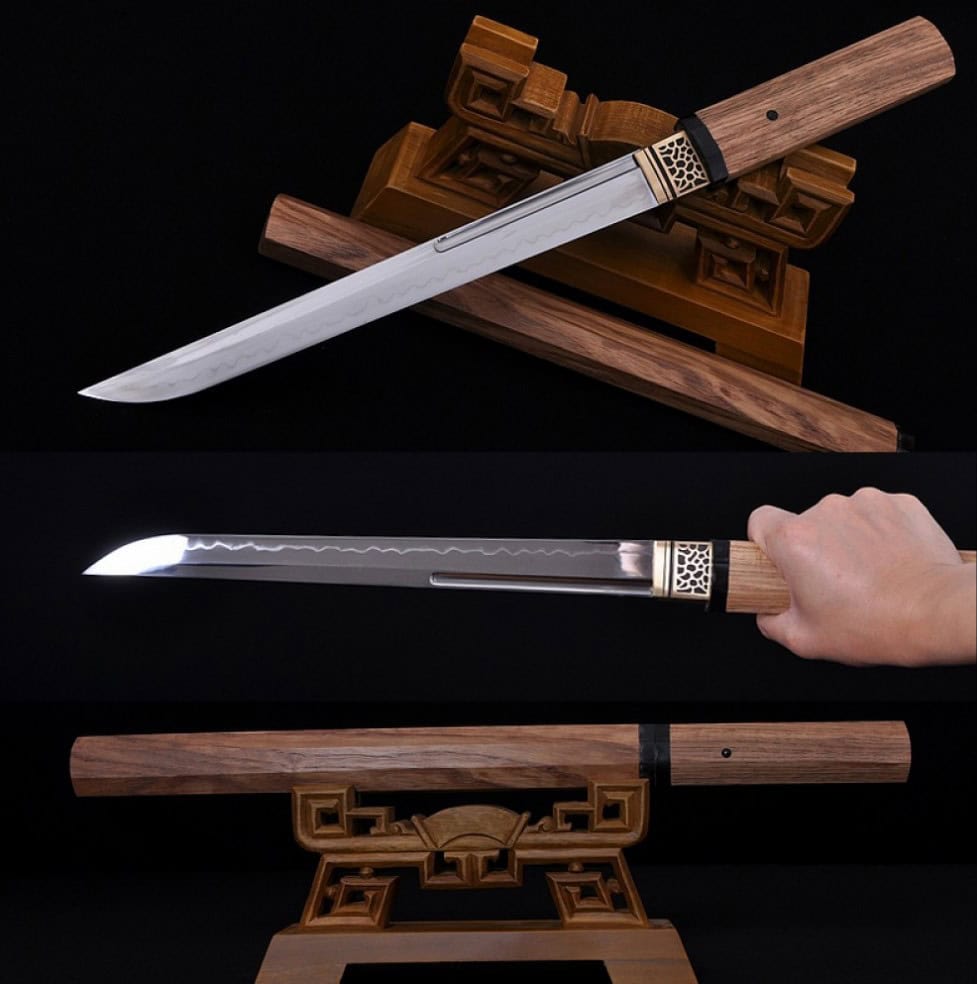
What I Like:
- Differentially Clay Tempered Blade: The blade, made from 1095 high carbon steel, has been differentially clay tempered to create a genuine hamon, ensuring a blend of toughness and flexibility.
- Authentic Construction: This full tang blade is securely attached to a handle made from natural hard hualee wood with double pinned bull horn mekugi, providing maximum durability.
- Elegant and Practical Design: The tanto comes with a natural hualee wood saya and tsuka, features a brass habaki and seppa, and includes a free sword bag and certificate of authenticity.
TrueKatana
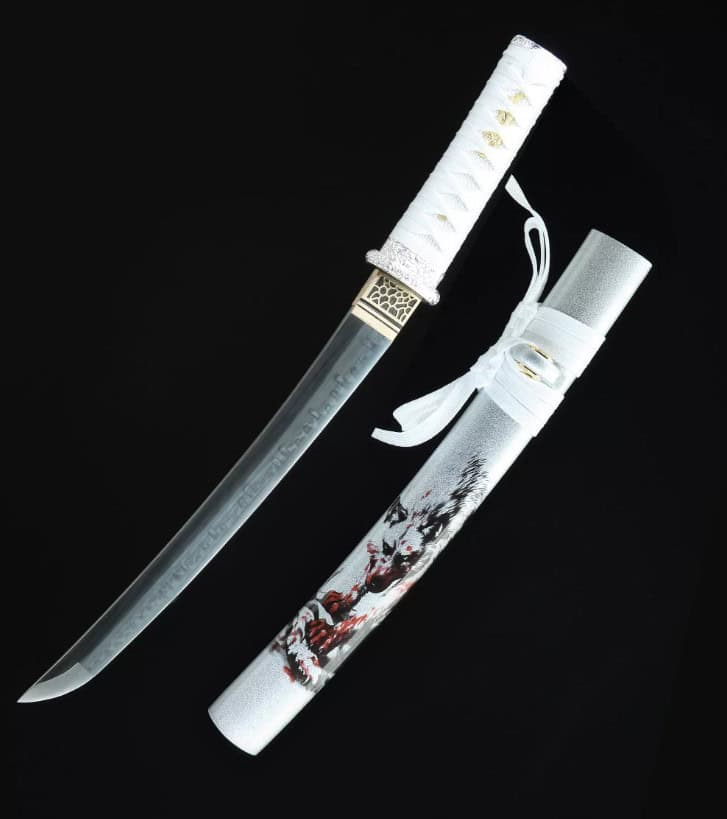
What I Like:
- T10 Steel Blade: The sword features a T10 steel blade, renowned for its exceptional hardness and durability, ensuring a razor-sharp edge that can withstand rigorous use.
- Handcrafted Excellence: Expertly hand-forged and clay tempered, this sword boasts a real hamon and a full tang design, making it battle-ready and perfect for cutting.
- Elegant Design: The white scabbard, oval-themed tsuba, and white cord handle with a ray-skin wrap combine traditional aesthetics with a modern touch, creating a visually stunning weapon.
Kult of Athena

What I Like:
- Traditional Construction: The Practical Plus Tanto features a hand-forged, high-carbon steel blade, differentially tempered with a traditional claying method for a sharp edge and durable spine.
- Elegant Design: This tanto boasts a flat black saya, black Japanese cotton sageo, genuine ray skin tsuka, and black synthetic leather tsuka-ito, adorned with antiqued fittings in a Japanese dogwood motif and a beautiful antiqued black sunburst tsuba.
- Compact and Lightweight: With an overall length of 16 1/2 inches and a blade length of 11 inches, this tanto is lightweight at 12 ounces, making it an excellent economical choice without compromising quality.
Etsy – Cutleryzone
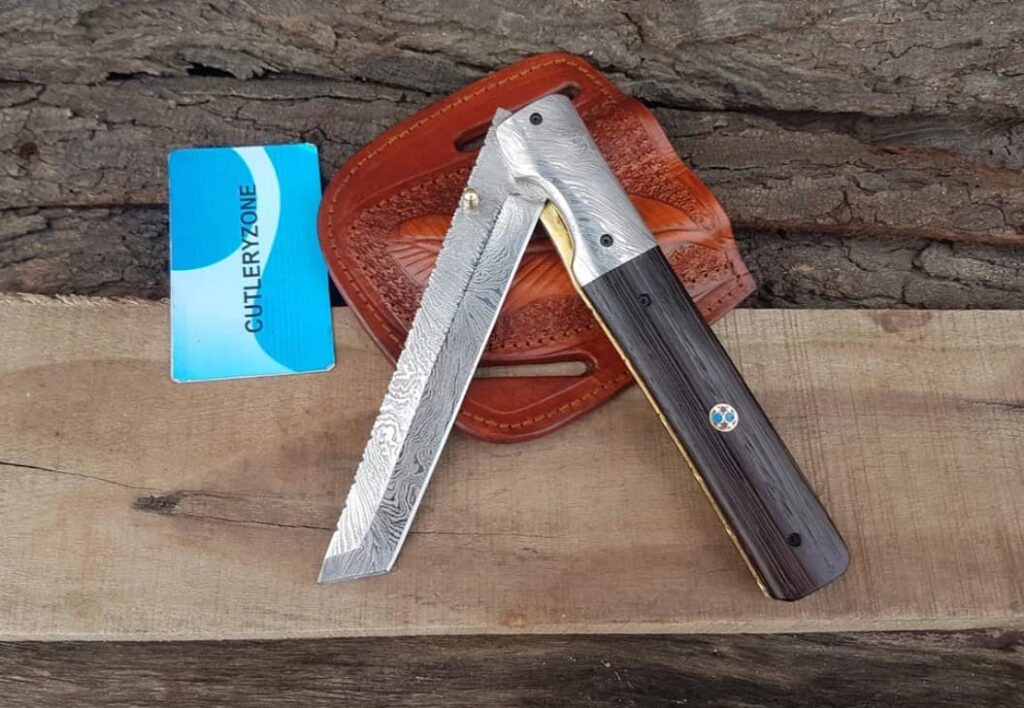
Etsy – TitanInternational
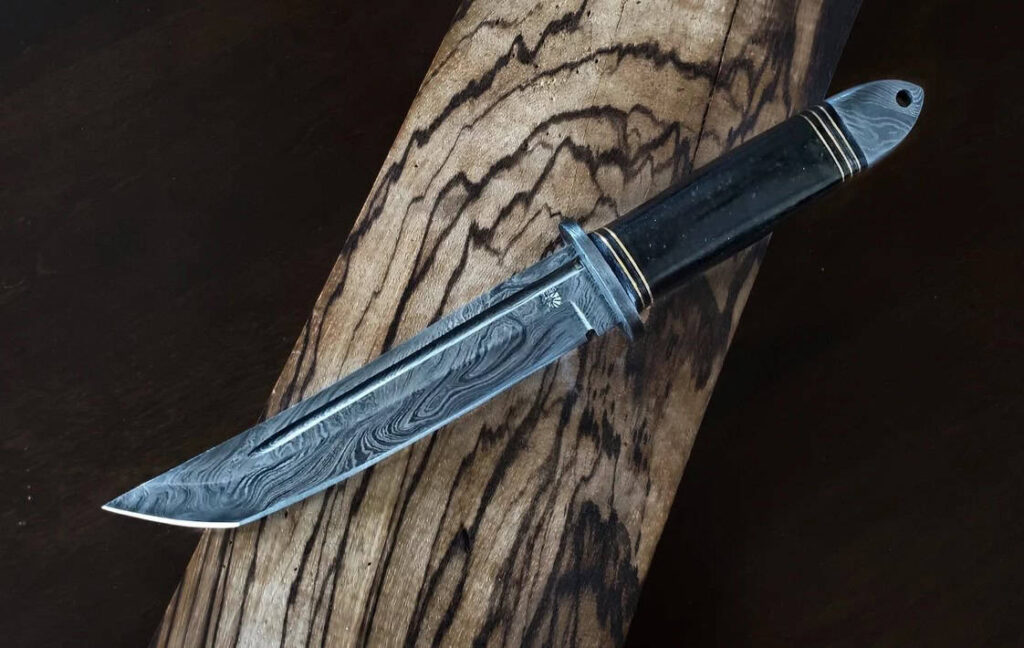
Etsy – CanadaKnives
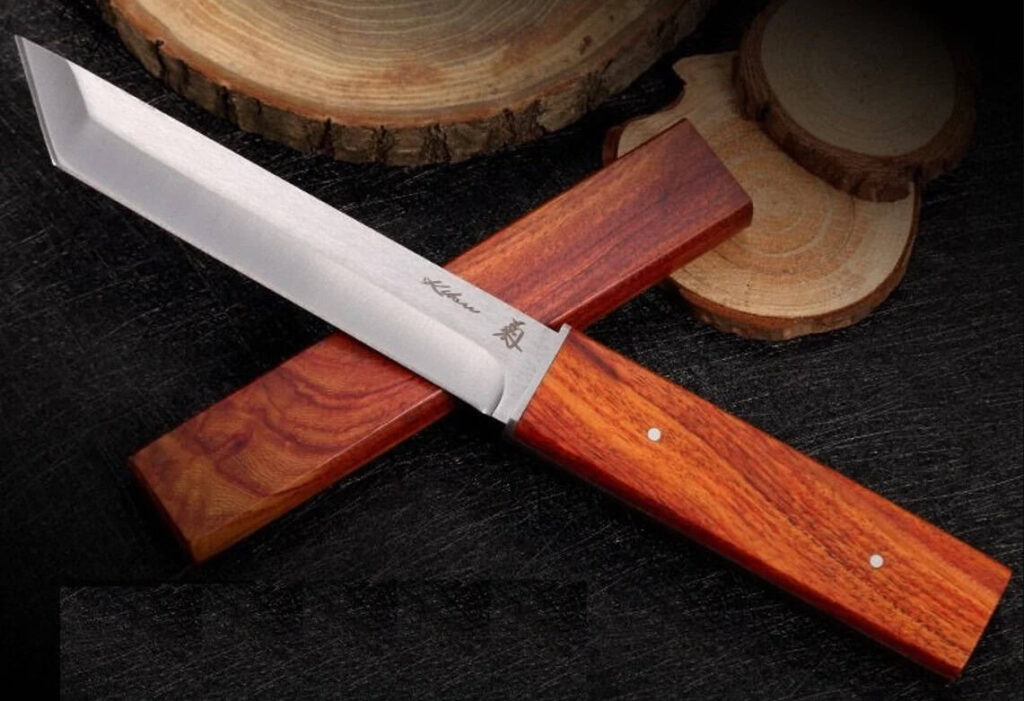
Etsy – SWORD88
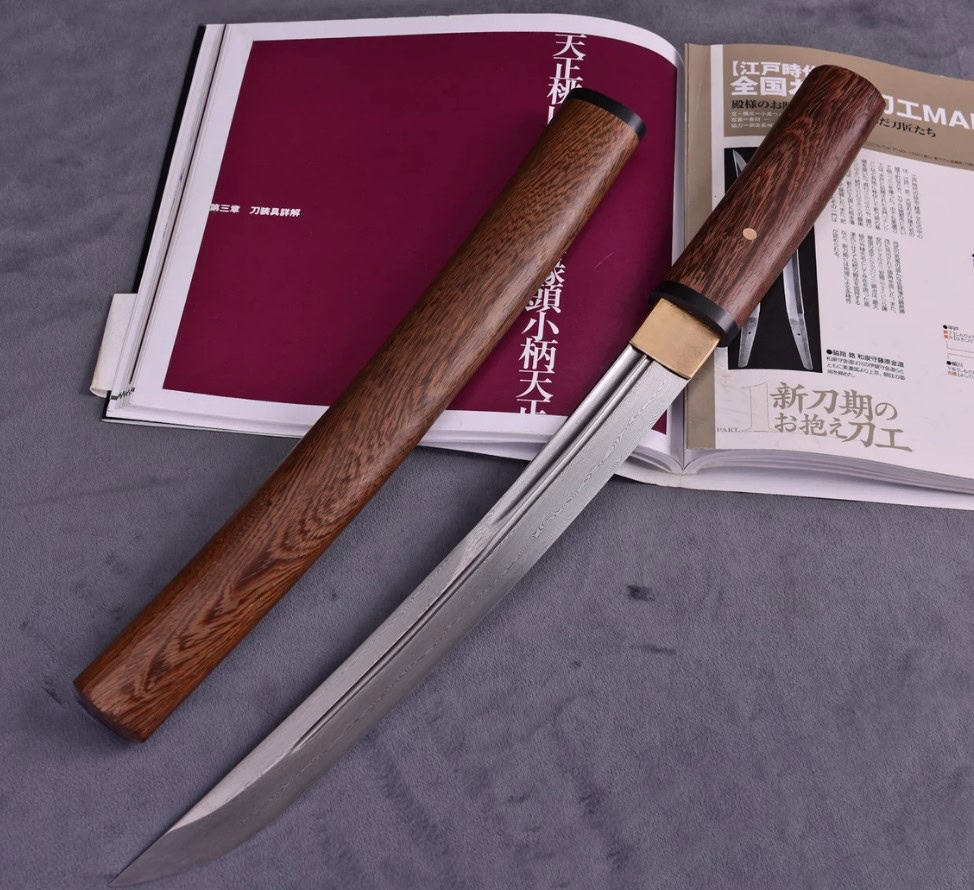
Final Thoughts
In conclusion, the tanto knife stands out as a remarkable example of both historical craftsmanship and modern utility. Its origins in 12th-century feudal Japan, where it was prized by samurai warriors, give it a rich, captivating history that continues to intrigue me. The unique angular blade shape and robust design make it a reliable tool for a variety of tasks, from piercing to slicing.
I particularly appreciate the way the tanto has evolved, seamlessly transitioning from a weapon of war to a versatile modern tool, whether in the kitchen, for everyday carry, or in tactical situations. The diversity within tanto variations, such as the tactical, recon, and shirasaya models, demonstrates its adaptability and enduring appeal. Overall, the tanto’s blend of form and function, historical significance, and practical design makes it an essential addition to any knife collection.
